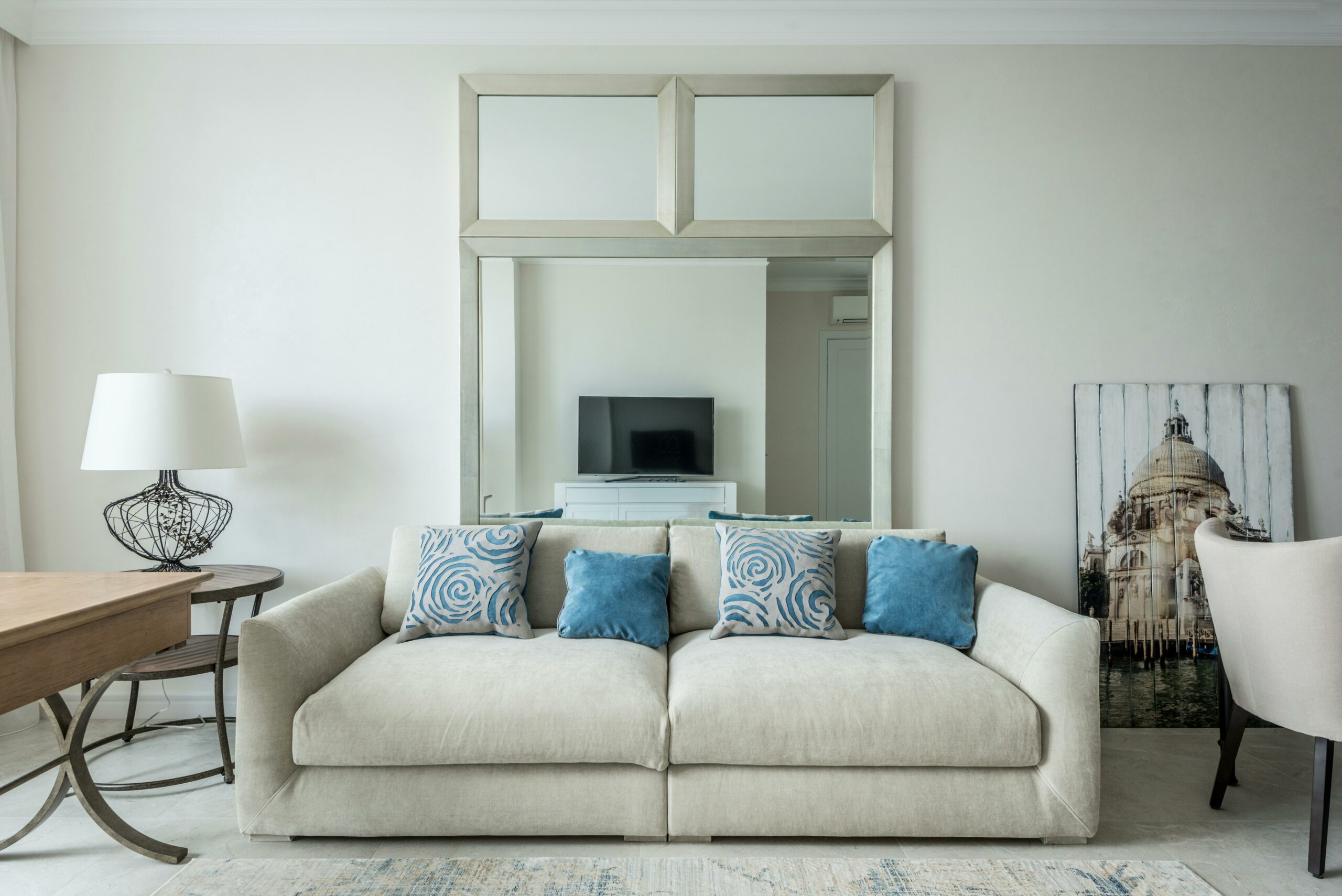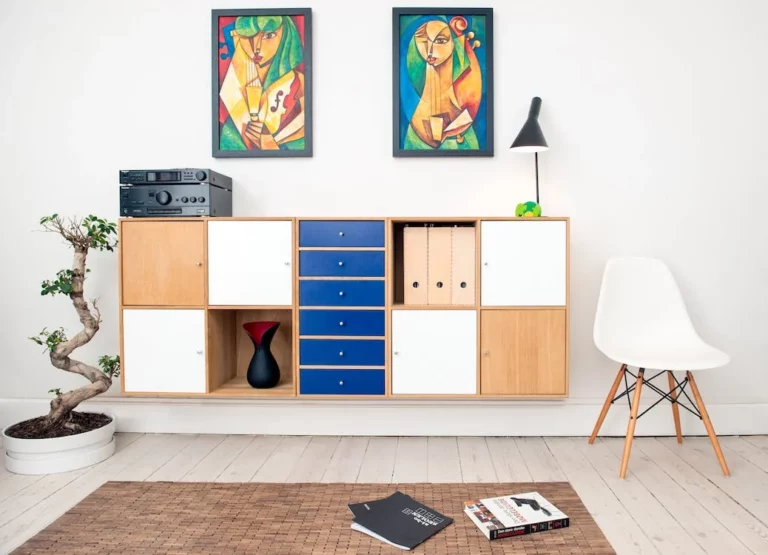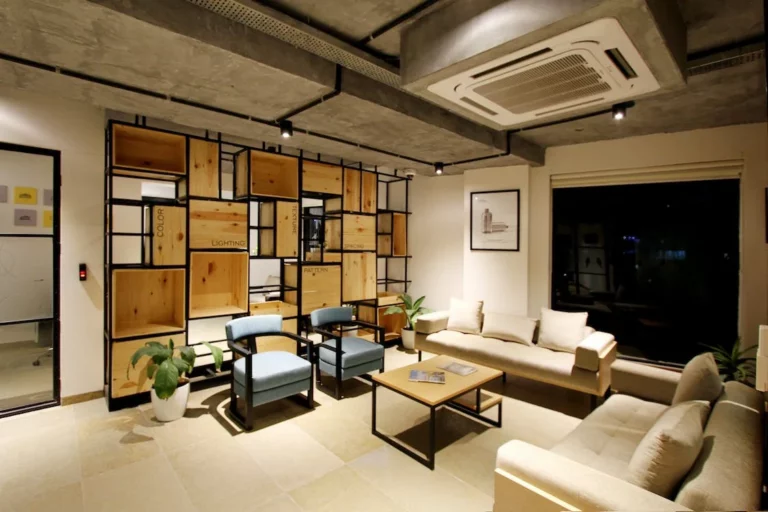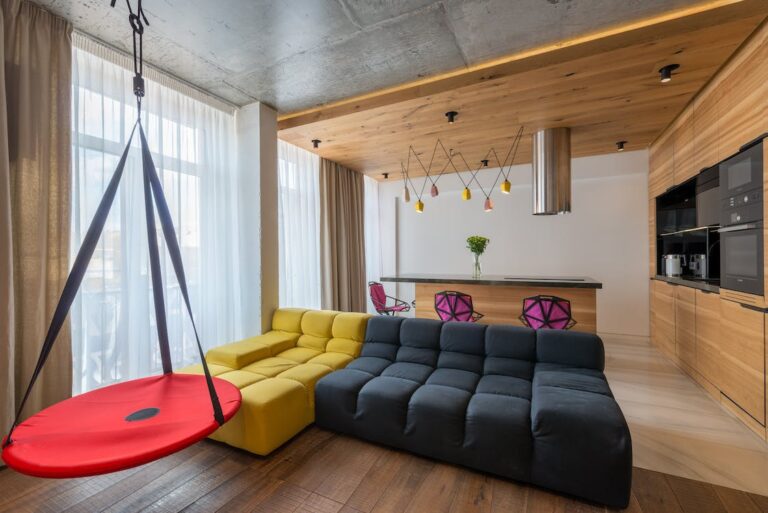Creating a Harmonious Space: Tips for Mixing Architectural Styles
Are you tired of the cookie-cutter look in architecture? Do you crave a home or space that reflects your unique personality and style? If so, then mixing architectural styles may be the perfect solution for you. By blending different design elements, you can create a harmonious space that is both visually captivating and highly functional.
Table of Contents
- 1 Creating a Harmonious Space
- 2 Understanding the Basics of Architectural Styles
- 3 Importance of Mixing Architectural Styles
- 4 Tips for Successfully Mixing Architectural Styles
- 5 Examples of Successfully Mixed Architectural Styles
- 6 Lessons from Professional Architects
- 7 Conclusion
- 8 Frequently Asked Questions
Creating a Harmonious Space

In this article, we will delve into the art of mixing architectural styles. We will explore the basics of various architectural styles, the importance of blending them together, and provide you with practical tips on how to successfully incorporate different elements into your space. Whether you are a homeowner looking to revamp your living space or an interior designer seeking inspiration, this article will provide you with valuable insights into the world of architectural fusion.
So, let’s dive in and discover the secrets to creating a harmonious space that reflects your individuality and design sensibility.
Understanding the Basics of Architectural Styles

Are you fascinated by the world of architecture? Do you find yourself admiring the curves and lines of buildings, marveling at how they seamlessly blend functionality and aesthetics? If so, then you’re in the right place. In this article, we’ll be taking a deep dive into the world of architectural styles, exploring the different design movements that have shaped the buildings we see around us. From minimalism to art deco, we’ll uncover the key characteristics and influences of each architectural style, helping you develop a deeper appreciation for the built environment.
Modern Architecture
Let’s start our journey with modern architecture. Born out of the early 20th-century Bauhaus movement, modern architecture embraces the principles of simplicity, functionality, and the rejection of ornamentation. Clean lines, open floor plans, and the innovative use of materials are hallmarks of this style. Some of the key features of modern architecture include:
- Emphasis on asymmetry and geometric shapes
- Integration of indoor and outdoor spaces
- Use of new materials such as glass, steel, and concrete
- Incorporation of natural light with large windows and skylights
Famous examples of modern architecture include the Guggenheim Museum in Bilbao, Spain, designed by Frank Gehry, and the Villa Savoye in France, designed by Le Corbusier.
Traditional Architecture
If you appreciate the charm of historical buildings and the warmth they exude, traditional architecture might be your cup of tea. This style draws inspiration from regional and cultural influences, reflecting a sense of timelessness and continuity. Key elements of traditional architecture include:
- Symmetry and balanced proportions
- Ornate details and decorative elements
- Use of natural materials like wood, stone, and brick
- Classic architectural features such as columns, arches, and cornices
From Greek and Roman architecture to Gothic cathedrals and colonial-style houses, traditional architecture can be seen in various forms around the world.
Industrial Architecture
Industrial architecture emerged during the Industrial Revolution, celebrating the beauty of function and utility. This style focuses on showcasing the structural elements and materials used in construction. Key characteristics of industrial architecture include:
- Exposed brick, steel, and concrete
- Large open spaces and high ceilings
- Emphasis on mechanical and industrial features
- Conversion of industrial spaces into lofts, offices, and galleries
Iconic examples of industrial architecture include the Tate Modern in London, housed in a former power station, and the High Line in New York City, a converted elevated railway transformed into a public park.
Art Deco Architecture
If you have a love for the bold and glamorous, art deco architecture might catch your eye. This style, popular in the 1920s and 1930s, is characterized by its sleek lines, geometric patterns, and lavish ornamentation. Key features of art deco architecture include:
- Symmetry and emphasis on verticality
- Use of decorative motifs like sunbursts and zigzags
- Luxurious materials such as marble, glass, and chrome
- Incorporation of stylized sculptures and reliefs
Famous examples of art deco architecture can be found in buildings like the Chrysler Building in New York City and the Hoover Building in London.
Minimalist Architecture
In a world of excess, minimalist architecture stands out for its simplicity and restraint. This style strips away unnecessary elements, focusing on clean lines, open spaces, and a sense of calm. Key characteristics of minimalist architecture include:
- Clear forms and absence of ornamentation
- Use of neutral colors and natural materials
- Emphasis on functionality and organization
- Integration of the building with its surrounding environment
Examples of minimalist architecture include the Farnsworth House by Mies van der Rohe and the Casa Malaparte in Capri, Italy, designed by Adalberto Libera.
So whether you lean towards the sleek lines of modern architecture or find comfort in the timeless charm of traditional design, there’s an architectural style out there for everyone. By understanding the basics of these styles, you can develop a deeper appreciation for the buildings that shape our cities and our lives.
“Architecture is a visual art, and the buildings speak for themselves.” – Julia Morgan
Importance of Mixing Architectural Styles
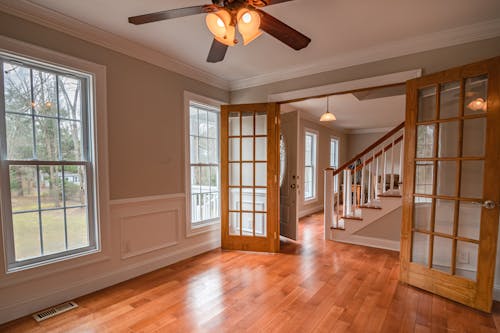
Mixing architectural styles in interior design has become increasingly popular in recent years. This design approach offers a unique opportunity to create a space that truly reflects your personality and allows for flexibility in design choices. By combining different architectural styles, you can elevate the character of your interiors and create a visually captivating and harmonious environment.
Here are a few reasons why mixing architectural styles is important in interior design:
- Adds Depth and Visual Interest: Mixing different architectural styles adds depth and visual interest to your space. It creates a dynamic and layered look, making your interiors visually appealing and engaging. Whether it’s combining modern and rustic elements or blending traditional and contemporary styles, the juxtaposition of different architectural features creates a unique aesthetic that captures attention.
- Allows for Personalization: Mixing architectural styles allows you to personalize your space and create something truly unique. It’s an opportunity to showcase your individuality and create a home that reflects your personal taste and style. By incorporating elements from different architectural styles, you can create a space that feels like it’s specifically tailored for you.
- Flexibility in Design: One of the major advantages of mixing architectural styles is the flexibility in design it offers. It allows you to blend different elements seamlessly, giving you the freedom to experiment with various design concepts. By combining elements from different styles, you can create a space that feels cohesive, even if the individual elements might seem contrasting at first.
- Creates a Harmonious Balance: Contrary to popular belief, mixing architectural styles doesn’t necessarily lead to a chaotic or disorganized look. With careful consideration and a thoughtful approach, blending different styles can actually create a harmonious balance. It’s about finding the right balance between contrasting elements and creating a cohesive overall aesthetic.
To successfully mix architectural styles in your interiors, here are a few tips to keep in mind:
- Start with a base style: Choose one architectural style as a base and then introduce elements from other styles to complement it rather than overwhelming the space.
- Keep a consistent color palette: Stick to a consistent color palette to create a sense of unity and coherence among different architectural elements.
- Pay attention to scale and proportion: Ensure that the scale and proportion of each architectural element you introduce work well within the overall space.
- Seek professional guidance: If you’re unsure about how to mix architectural styles effectively, consider consulting with an interior designer who specializes in blending different design concepts.
Remember, the goal of mixing architectural styles is to create a space that is visually captivating, harmonious, and uniquely yours. So go ahead, explore different architectural styles, and let your creativity shine through!
Also Read : Maximizing Functionality and Style: Minimalist Home Design for Families
Tips for Successfully Mixing Architectural Styles
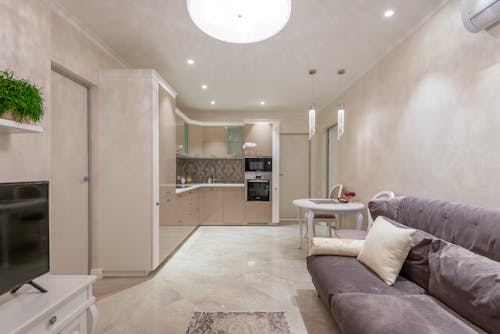
When it comes to mixing architectural styles in a home or building, there are a few key tips that can help you achieve a harmonious and visually pleasing result. By understanding your preferences, the aesthetics of each style, and the importance of balancing elements, you can create a space that seamlessly blends different architectural influences. Here are some valuable tips to consider:
Knowing Your Preference
Before embarking on a project that involves mixing architectural styles, it’s essential to have a clear understanding of your own preferences. Take the time to research and explore different architectural styles, from classic to modern, and determine what resonates with you the most. Knowing your personal preferences will help guide your decisions as you blend different styles together.
Understanding Aesthetics of Each Style
To successfully mix architectural styles, it’s crucial to have a solid understanding of the aesthetics of each style involved. Pay attention to the key features, proportions, and materials commonly associated with each architectural style. By understanding the defining characteristics of each style, you can make informed choices about how to blend them together seamlessly.
Striking Balance Between Styles
One of the most critical aspects of successfully mixing architectural styles is striking a balance between the different elements. Balancing styles requires one to know how much of one style can be used without overpowering the other. It’s important to create a cohesive and visually pleasing composition that incorporates elements from each architectural style in a harmonious way. Avoid clashing elements and instead strive for complementarity.
Being Mindful of Transitional Elements
When blending different architectural styles, it’s essential to pay attention to transitional elements. Transitional elements act as bridges between the different styles and help create a smooth transition from one style to another. These elements can include architectural details, such as moldings, or even furniture and decor choices. By incorporating transitional elements thoughtfully, you can create a seamless flow between styles within your space.
Creating Focal Points and Distractions
Another effective way to successfully mix architectural styles is by creating focal points and distractions within your space. By strategically placing elements of one architectural style as focal points, you can draw attention to specific areas and help create a visually interesting composition. Similarly, incorporating distractions in the form of contrasting elements can help divert attention from any potential clashes and create a more balanced overall look.
Remember, successfully mixing architectural styles requires careful consideration and a keen eye for design. By following these tips and allowing your personal preferences to guide you, you can create a space that reflects your unique style while seamlessly blending different architectural influences.
Examples of Successfully Mixed Architectural Styles
When it comes to architecture, sometimes the most striking designs emerge from the creative fusion of different styles. Mixing architectural styles can result in a unique and visually captivating aesthetic that tells a story of cultural blending and innovation. In this section, we will explore some examples of successfully mixed architectural styles that demonstrate the beauty and creativity that can arise from combining different architectural elements.
1. Santorini, Greece
- Architectural Styles: Cycladic and Venetian
- Notable Features: Whitewashed houses, blue-domed churches, and Venetian-influenced architecture.
A mesmerizing blend of Cycladic and Venetian architectural styles can be found on the enchanting island of Santorini, Greece. The island’s whitewashed houses, blue-domed churches, and narrow cobblestone streets create a picturesque scene that attracts visitors from all over the world. This unique architectural fusion is a result of the island’s history, which includes both Cycladic influences from ancient times and the Venetian occupation during the Middle Ages.
2. Cape Dutch Architecture, South Africa
- Architectural Styles: Dutch, German, and French
- Notable Features: Thatched roofs, whitewashed walls, and ornate gables.
In South Africa, you’ll find an intriguing blend of Dutch, German, and French architectural styles known as Cape Dutch architecture. This style emerged during the 17th century in the Western Cape region and reflects the diverse cultural influences of the early European settlers. Cape Dutch buildings are characterized by their thatched roofs, whitewashed walls, and ornate gables, creating a charming and distinctive architectural landscape.
3. American Craftsman Bungalow, United States
- Architectural Styles: Arts and Crafts, Japanese, and Native American
- Notable Features: Low-pitched roofs, wide overhanging eaves, and use of natural materials.
The American Craftsman bungalow style, popularized in the early 20th century, is a prime example of the successful blending of architectural styles. This style draws inspiration from the Arts and Crafts movement, as well as Japanese and Native American design principles. With its low-pitched roofs, wide overhanging eaves, and emphasis on using natural materials, the American Craftsman bungalow epitomizes a harmonious mix of influences that seamlessly coexist.
4. Indo-Saracenic Architecture, India
- Architectural Styles: Indo-Islamic, Gothic, and Renaissance
- Notable Features: Mughal-inspired domes, pointed arches, and intricate ornamentation.
In India, the Indo-Saracenic architectural style showcases an extraordinary fusion of Indo-Islamic, Gothic, and Renaissance elements. This style emerged during the British Raj and was popularized by architects who sought to create a unique blend of Indian and European architectural traditions. Indo-Saracenic buildings can be identified by their Mughal-inspired domes, pointed arches, and intricate ornamentation, creating a rich and visually stunning architectural experience.
Embracing the fusion of architectural styles can result in awe-inspiring and memorable designs that captivate the imagination. These examples demonstrate the potential for beauty and innovation when different architectural elements come together harmoniously. Whether it’s a mix of ancient and modern, traditional and contemporary, or a blend of cultural influences, the possibilities for creating unique architectural masterpieces are endless.
Don’t miss out on the chance to explore these remarkable architectural amalgamations firsthand or simply admire their beauty from afar!
Lessons from Professional Architects
Professional architects have a wealth of knowledge and experience when it comes to designing buildings that are not only functional but also visually appealing. Their expertise goes beyond just the technical aspects of architecture; they also understand the importance of making deliberate design choices that have a lasting impact. In this article, we will explore three valuable lessons we can learn from professional architects: the paradox of choice, the power of contrast, and staying true to a building’s history.
The Paradox of Choice
When it comes to designing a building, architects often face a paradox of choice. They have endless possibilities and options at their disposal, from materials and colors to shapes and styles. While having choices may seem like a luxury, it can also be overwhelming and hinder the decision-making process. Professional architects understand the importance of narrowing down the options and making thoughtful selections.
Here’s why the paradox of choice matters in architecture:
- Focus and clarity: Too many choices can lead to a lack of focus in the design. By limiting the options, architects can hone in on the essential elements that will make the building stand out.
- Coherence and cohesion: Making deliberate design choices ensures that all elements of the building work together harmoniously. This creates a sense of unity and coherence in the overall design.
- Time and cost efficiency: The more choices there are, the longer it takes to make decisions, potentially delaying the construction process. By simplifying the options, architects can save time and money without compromising on quality.
The Power of Contrast
Creating contrast in architecture can have a powerful impact on the overall aesthetics of a building. Contrast involves the deliberate use of opposing elements, such as light and dark, old and new, smooth and textured, to create visual interest and highlight key features. Professional architects understand that contrast adds depth and dimension to a design, elevating it from ordinary to extraordinary.
Here’s why the power of contrast is essential in architecture:
- Visual impact: Contrast catches the eye and draws attention to specific areas or features of a building. It creates a visual focal point that leaves a lasting impression.
- Enhanced legibility: Contrast helps differentiate between different elements, making the architecture more legible and easier to understand. This is particularly important in complex or large-scale projects.
- Expressing character: Contrast allows architects to play with different themes and styles, showcasing the building’s unique character and personality. It adds depth, richness, and complexity to the design.
Staying True to the Building’s History
When working on a renovation or restoration project, professional architects understand the significance of honoring a building’s history. They strive to strike a balance between preserving the original character of the structure while incorporating modern elements that meet contemporary needs. Respecting the building’s history not only adds value but also ensures a seamless integration of old and new.
Here’s why staying true to a building’s history is crucial:
- Preserving heritage: Historical buildings have a story to tell. By respecting their history, architects help preserve cultural heritage and maintain a sense of place.
- Maintaining architectural integrity: Staying true to the building’s history ensures that the original design intent is honored. It pays homage to the architect who initially envisioned the structure.
- Creating a sense of continuity: By seamlessly integrating modern elements, architects bridge the gap between past and present, creating a design that encompasses both tradition and innovation.
Professional architects have valuable lessons to teach us when it comes to designing buildings. By understanding the paradox of choice, harnessing the power of contrast, and staying true to a building’s history, we can create architectural marvels that not only serve their purpose but also leave a lasting impact on those who experience them.
Conclusion
In conclusion, mixing architectural styles can be a creative and exciting way to design a harmonious space. By understanding the basics of different styles and carefully selecting elements from each, you can achieve a unique and personalized aesthetic. Remember to strike a balance between styles, be mindful of transitional elements, and create focal points to guide the eye. Drawing inspiration from professional architects and their experiences can also provide valuable insight into successful blending of architectural styles. So go ahead, unleash your creativity, and create a space that truly reflects your vision and personality.
And if you’re looking for more inspiration and ideas in the world of architecture and design, don’t forget to check out Arkitecture Today. With its daily dose of architectural insights, home and interior design inspiration, and decoration ideas, this online blog is your go-to resource for all things related to creating beautiful and functional spaces.
So why wait? Dive into the world of architectural styles and let your imagination run wild. Happy designing!
Frequently Asked Questions
- What is meant by mixing architectural styles?Mixing architectural styles refers to the practice of combining different design elements, features, or motifs from multiple architectural styles within a single space or building to create a unique and harmonious aesthetic.
- Why is mixing architectural styles popular in interior design?Mixing architectural styles in interior design allows for creativity, personalization, and visual interest. It can create a sense of eclecticism, showcase individuality, and blend various design influences for a more dynamic and layered space.
- What are some tips for successfully mixing architectural styles?To successfully mix architectural styles, consider establishing a cohesive color palette, balancing proportions and scales, combining complementary styles, using transitional elements, seeking professional advice, and maintaining a sense of harmony and unity throughout the space.
- Are there any limitations or guidelines when mixing architectural styles?While mixing architectural styles allows for creative freedom, it’s important to maintain a sense of cohesion and avoid overwhelming the space. Follow basic design principles, ensure compatibility between chosen styles, and respect the architectural integrity of the building.
- Can mixing architectural styles be applied to both residential and commercial spaces?Yes, mixing architectural styles can be applied to both residential and commercial spaces. It offers an opportunity to create unique and captivating environments in various settings, depending on the desired aesthetic and functionality.

